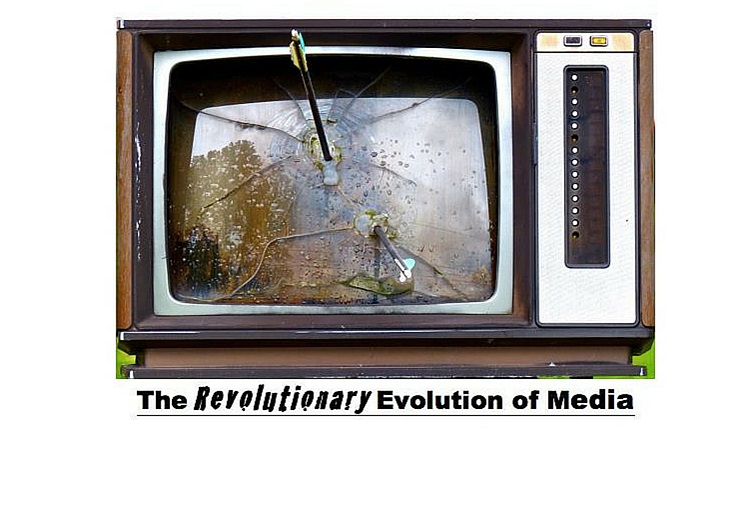TREotM: The Eighties Previews the “Tens”

Chapter 10, Part 7
We’ve made it to the Eighties! Big hair, blond jokes and “I want my MTV!”
Of course, it was whole lot more than that. In the 1980’s, cable companies’ desires to conquer the consumer TV universe (then truly dominated by broadcast TV) resulted in an explosion of channels and technologies that presaged today’s parallel explosion in Web services, apps and over-the-top (OTT) wannabes. Take a close look at some of the innovations of the decade and you’ll get an interesting overview of the digital-everything fireworks in the 2010s.
For cable, the ‘80s action really got going in mid-decade as:
In 1984: Arts & Entertainment Network, American Movie Classics, Lifetime Television Network all launched – on cable of course – seeking new audiences. Meanwhile, in technology, Sony introduced the CD player. In early “Internet” news, Trintex – a joint venture of CBS, IBM and Sears (!) – was founded in early 1984; it didn’t launch until 1988 after Sears ducked and the name changed to Prodigy.
In 1985: More channels launched with Nostalgia TV, Discovery (by John Hendricks, not long after, Shark Week opened its jaws), Goodlife TV, Home Shopping Network, InDemand, Nick at Nite, VH1. In tech news, CVC launched Q-Link, which became AOL. (“You’ve Got Mail” – even a movie got made about it later.) The WELL was launched by Stewart Brand and Larry Brilliant. And an early (way, way too early) push new service debuted courtesy of a partnership of TCI, McGraw-Hill and Telecrafter. In the venture called X*PRESS Information Services, Inc., Telecrafter President Clint Ober and I built a system of global wire services (including the first US deals with China’s Xinhua, the Soviet Union’s Tass and 92 other feeds plus 20-minute stock quotes from McGraw-Hill) that multiplexed each service, uniquely coded each story using key words and combined them into a singular feed distributed via satellite using the vertical blanking interval on Turner Broadcasting System’s TBS feed to cable headends from whence it went via coaxial cable to just about every make of personal computers.
The technology worked well. Business executives loved it. Nearly every cable system installed the proper headend equipment to handle it. But X*PRESS didn’t make it. Why? At that time only one cable system in the US has fired its financial district: Honolulu. X*PRESS thrived on Oahu but withered elsewhere for the lack of access to its target audience. A lesson still imperative. Be sure you have a way to reach your audience before you launch your next big idea.
In business-to-business publishing and information, The Times Mirror Company, publisher of the Los Angeles Times and the Jeppesen books for pilots, bought Broadcasting Magazine from the Taishoff family (leaving them in charge for some time). Broadcasting (now Broadcasting &Cable) later joined TWICE and Multichannel News at New Bay in 2009.
Another high-tech failure for the year came from Japan’s NHK, which proposed analog high definition television. Called MUSE, it scared electronics manufacturers all over the world because of two things: (1) it used significantly more bandwidth than regular TV channels and (2) it was startlingly better than just good. But (here’s another tip for today’s innovators) TCI’s John Sie didn’t like how much bandwidth the MUSE system demanded. As a result, he started exploring a route to high definition via compression. It took a while, but the move to digital helped.
In 1986: After the excitement of 1985, the government raised its head in 1986. (Another lesson, never discount DC, or even the local mayor or city council.) Because a DC Circuit Court ruled it “no longer served the public interest,” the FCC dropped one if it’s oddest regulations: the Fairness Doctrine. The Doctrine had been promulgated in 1949 and was aimed at broadcast licensees mandating any coverage of controversial subjects be done in a manner that was “honest, equitable and balanced” (whatever that might mean was left to the Commission to judge). The language of the Doctrine hung around until 2011 when the rule, which had earlier been used to revoke broadcast license of Lamar Broadcasting’s WLBT in Jackson, MS, because of its pro-segregation stance (it hosted a bookstore owned by the White Citizen’s Council in its lobby) and censorship of NBC News coverage of the civil rights movement. It was later licensed to Raycom and became an early pioneer for racial equality.
That’s three years with a lot of activity. Next week we’ll take a look at the late Eighties when media saw more and even bigger changes.
Next week: Chapter 10, Part 8 – The Late Eighties
The opinions and points of view expressed in this commentary are exclusively the views of the author and do not necessarily represent the views of MediaVillage management or associated bloggers.


